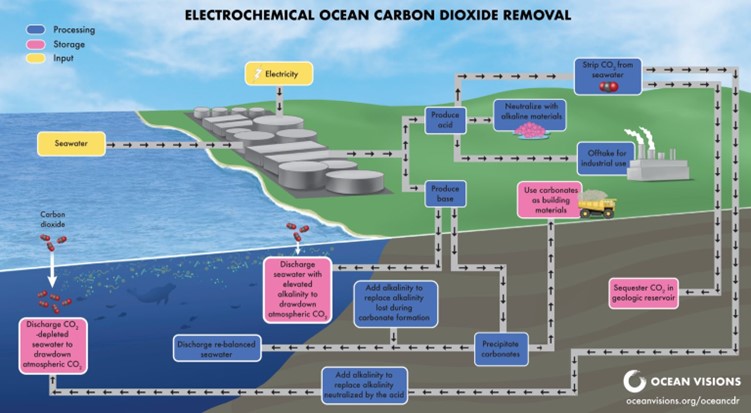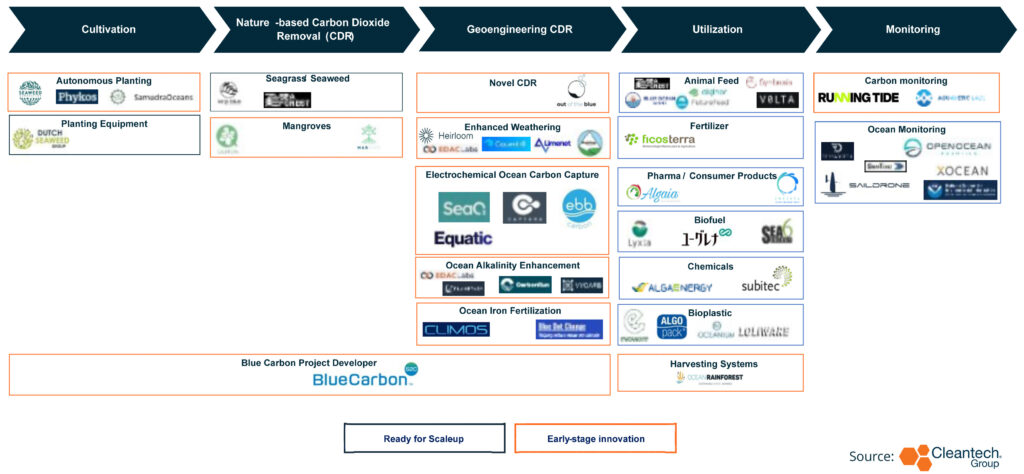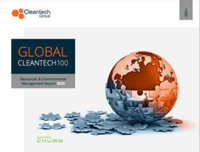Ocean Carbon Dioxide Removal: Integrity at a Cheaper Price?
The voluntary carbon market (VCM), where large corporates are paying for offsets to reduce their net-emissions to reach net-zero carbon goals, has been severely scrutinized this past year. In January, an investigation led by The Guardian, Die Zeit, and SourceMaterial, concluded that 94% of voluntary offsets sold by Verra were worthless. The study found that only three projects attempted to use scientific methods to measure avoided deforestation.
This isn’t the first swipe at the legitimacy of the VCM. In November 2022, Bloomberg called out large corporates for using ineffective non-additional renewable energy offsets to become ‘carbon neutral’. The use of these “worthless” offsets are understandable as the market is unregulated and they are cheap, with forestry offsets averaging $10-15 and only $2 per ton for renewable energy offsets.
The quality of an offset can be determined by a number of factors including additionality, degree of permanence, ability to measure and monitor the carbon, and potential co-benefits. A good proxy of quality is if they are a carbon dioxide removal (CDR) offset, e.g., reforestation rather than avoided emissions, forestry protection, or renewable energy.
Demand is rising for offsets and companies pursuing smart offset investments are looking at higher quality and innovative offset project types. These major corporates aim to reduce their net emissions and create strategic partnerships with innovative project types poised to alleviate integrity pain points and the high cost of CDR.
In April 2023, for example, Autodesk, H&M Group, JPMorgan Chase, and Workday dedicated $100M collectively into the Frontier advance market commitment initiative, which enables member companies to pre-purchase high-quality, permanent carbon removal offsets. This adds to the $925M already committed to Frontier from Stripe, Alphabet, McKinsey, Meta, and Shopify last year.
Since March, we have monitored a number of investments into electrochemical ocean-based CDR, including SeaO2, Captura, and Equatic. These innovators are removing CO2 from seawater. The ocean is an interesting place to capture carbon with higher dissolved CO2 in seawater compared to atmospheric concentrations and a proven drawdown of CO2 from the atmosphere when removed from the ocean, thus providing transparency, as it is well understood where the carbon goes.
New sources of funding are launching to fund ocean CDR. In October 2022, ocean climate-focused VC, Propeller, launched a $100M fund for ocean carbon removal technologies, blue carbon methodologies, and monitoring and verification technologies.
Benefits of Electrochemical Ocean CDR
In electrochemical ocean CDR, CO2 can be permanently removed. The additionality is clear as this is purpose-built CDR, while the resale of by-products such as hydrogen can reduce the overall costs of removing the carbon. Unlike many direct air capture (DAC) technologies, electrochemical ocean CDR doesn’t require solvents or heat, only seawater and renewable energy.
Cleantech Group spoke to Edward Sanders, COO of Equatic, who has developed a closed-system electrolysis and DAC system who explained, “Our electrolysis process generates CDR and green hydrogen, and we can do two things with that hydrogen:
- Reduce the energy intensity of the entire process
- Sell that hydrogen
In terms of our business model, we generate the majority of revenue from CDR sales, but we expect this to even out over time as we scale and develop. We benefit from having two products with the same capital expenditure.”
In terms of climate impact, innovators see great opportunities ahead. SeaO2’s Co-Founder and CEO, Ruben Brands, outlined their progress and ambitions by adding, “We’ve set up our prototype along the Dutch coastline and are in the midst of designing and constructing our pilot plant, targeting a yearly capacity of 250 tons of CO2. Our goal is to expand to kiloton capacity by 2025, megaton capacity in 2030 and aim to capture 1 gigaton of CO2 annually by 2035.”
How Does Electrochemical Ocean CDR Work?
CO2 can be directly captured from seawater via three methods:
- Physical — Pumping CO2-free air through seawater
- Chemical — Addition of acid for degassing or base to increase alkalinity
- Electrochemical – Electricity is used to split H2O into H+ and OH- ions, the acidic H+ ions can be used to degas CO2 out of seawater or can be used to weather alkaline rocks to increase alkalinity. The alkaline base can be used to capture CO2 directly from the atmosphere, storing as bicarbonate and carbonate ions in a solid form which can sink to the ocean floor.
These actions result in the net removal of up to ≈4.6 kg of CO2 per m3 of seawater processed.
Companies Making Waves
Innovators are raising significant investment from institutional investors to develop technology and are also entering pre-purchase agreements and strategic partnerships to raise funds to pilot and scale facilities. Corporates participating have made climate commitments and include many early investors in the VCM innovation ecosystem (e.g., Klarna) and many are driving for high-quality removals (e.g., Frontier initiative).
There are many innovators emerging in the blue carbon/ocean CDR value chain (see below), across nature-based solutions which are more established to grey-infrastructure and geoengineering CDR solutions like electrochemical ocean carbon capture which are more early-stage. Overall, the ocean CDR value chain is developing rapidly with emerging innovations across cultivation, CDR, utilization (which is more established), to monitoring, which can provide necessary transparency and integrity to projects.
Blue Carbon/Ocean CDR Value Chain
Recent Deals
- September 2023: Frontier announced a third round of carbon removal purchases on behalf of Stripe for $7M, investing in 12 companies including Banyu Carbon, which uses sunlight to capture CO2 from seawater and Carbon Blue, which uses calcium in a closed-loop cycle to remove CO2 from seawater.
- May 2023: Equatic, a developer of seawater electrolysis that removes CO2 from the atmosphere and generates green hydrogen, raised $30M. Investors included the Chan Zuckerberg Initiative, Temasek Foundation, the U.S. DoE, and angel investors. The funding will be used to develop and launch its technology. Equatic also entered into a pre-purchase option agreement with Boeing, where Equatic will remove 62,000 metric tons of carbon dioxide and will deliver 2,100 metric tons of carbon-negative hydrogen to Boeing.
- May 2023: SeaO2 entered a pre-purchase agreement with Klarna and WRLD Foundation as part of its $2.35M Climate Transformation Fund.
- April 2023: Ebb Carbon, developer of an electrochemical CDR for seawater system which integrated with existing facilities processing seawater, raised $20M in a Series A round. Investors included Prelude Ventures, Evok Innovations, Congruent Ventures, and Grantham Foundation.
- January 2023: Captura, a provider of carbon capture and sequestration solutions from seawater via electrodialysis which reduces the need for absorbents, raised $12M in a Series A round led by Equinor Ventures. Other investors include Aramco Ventures, CalTech, Hitachi Ventures, Future Planet Capital and mTerra Ventures. In July, Captura entered a joint venture with Deep Sky to install a direct ocean capture pilot facility in Quebec that removes 100 tons of carbon dioxide from the ocean annually.
Challenges
As with more established DAC technologies, such as those developed by Carbon Engineering or Mission Zero Technologies, electrochemical ocean CDR requires energy to power. As such, the infrastructure is planned to be co-located to renewable energy sources, such as wave or hydropower.
Methodologies are yet to be developed by certification providers like Verra, which limits the ability to be sold. Although the technology looks promising, it has not been proven at scale where economics may differ. Additionally, for open systems, the impact on biodiversity and ocean composition is unknown, so innovators are working with research groups to understand and mitigate any impact.
What to Look For
Ocean Alkalinity Enhancement: Frontier’s recent $7M pre-purchase commitment included a number of ocean alkalinity enhancement (OAE) innovators including CarbonRun, Planetary, and Vyacarb. OAE utilizes alkaline substances like lime or olivine, which are often sourced as mining by-products. These materials raise seawater alkalinity, promoting the uptake of atmospheric CO2. CO2 is then converted into bicarbonate ions, leading to its long-term storage in the ocean.
Similar to electrochemical ocean CDR, there is poor understanding of how these ‘geoengineering’ solutions impact biodiversity, however, investment is being spent on research:
- September 2023: The U.S. Department of Commerce and NOAA announced $24M for research into marine CDR including OAE.
- June 2023: Meta’s former CTO, Mike Schroepfer, launched Carbon to Sea, a $50M non-profit organization seeking to fund research into OAE.
Enhanced Weathering: Although mostly applied on land, in enhanced weathering, carbon enters waterways and washes out to sea for storage. Enhanced weathering offers a passive CDR route by using crushed silicate rocks such as basalt to permanently store atmospheric carbon as carbonates. Final products can also be used to create aggregate for roads (Alkali Earth) or to produce metals (EDAC Labs). In September, Microsoft signed one of the largest pre-purchase agreements in permanent CDR to date to purchase 315,000 metric tons of CO2 removal from enhanced weathering innovator Heirloom.
It’s clear that investors, governments, and corporations are now looking out to sea for the next big win in CDR and the growing VCM. Electrochemical ocean CDR and its cousins – ocean alkalinity enhancement and enhanced weathering – present a high-quality, high-integrity and high-impact CDR route. Ocean CDR may be more effective, efficient, and cheaper compared to existing CDR projects.
I predict those aligning with existing ocean infrastructure and those with strong markets for utilization products are well placed to scale. However, I also caution rapid scaling without thorough research and buy-in from local communities – climate solutions should alleviate the biodiversity crisis, not contribute to it.





